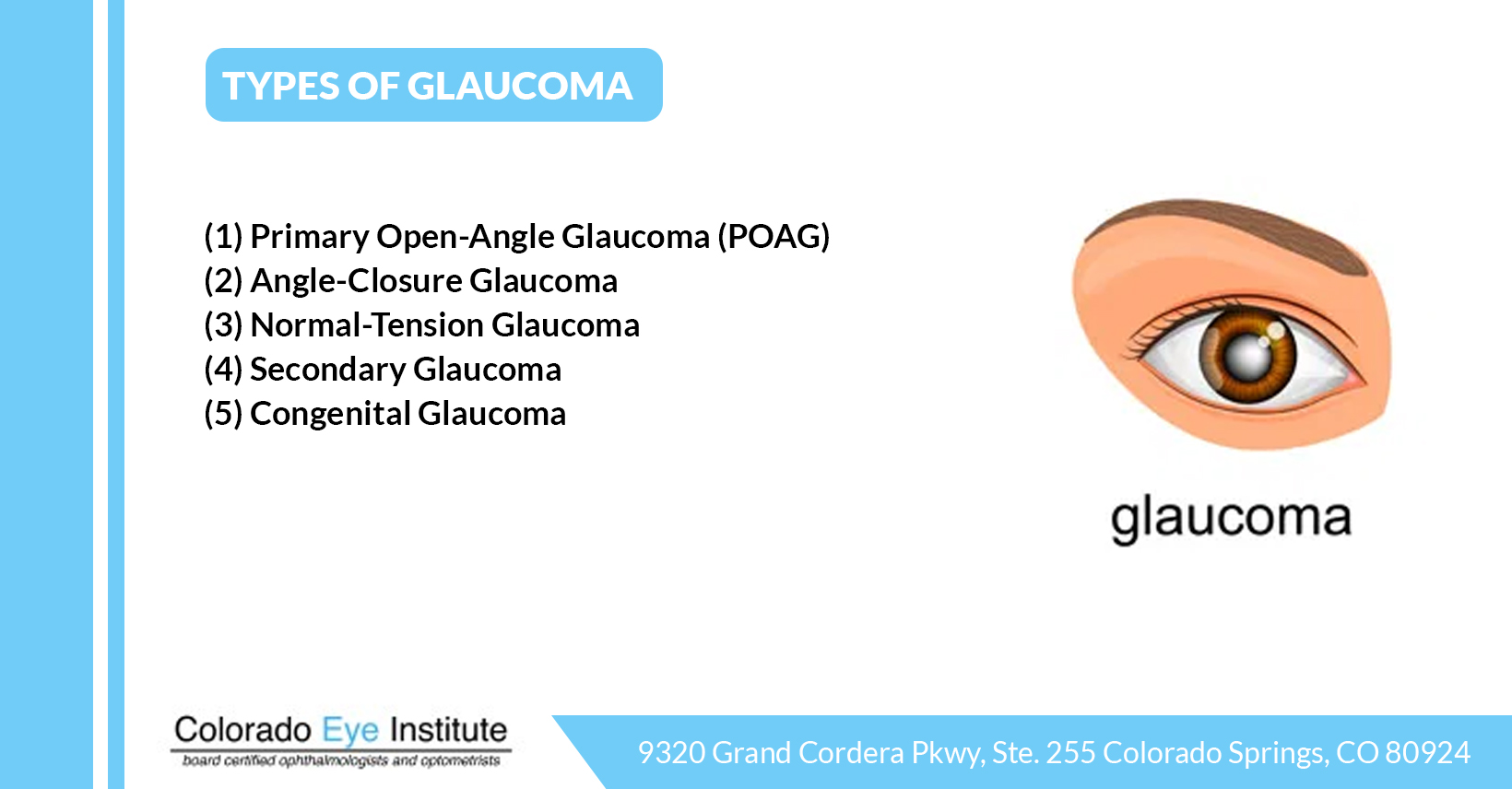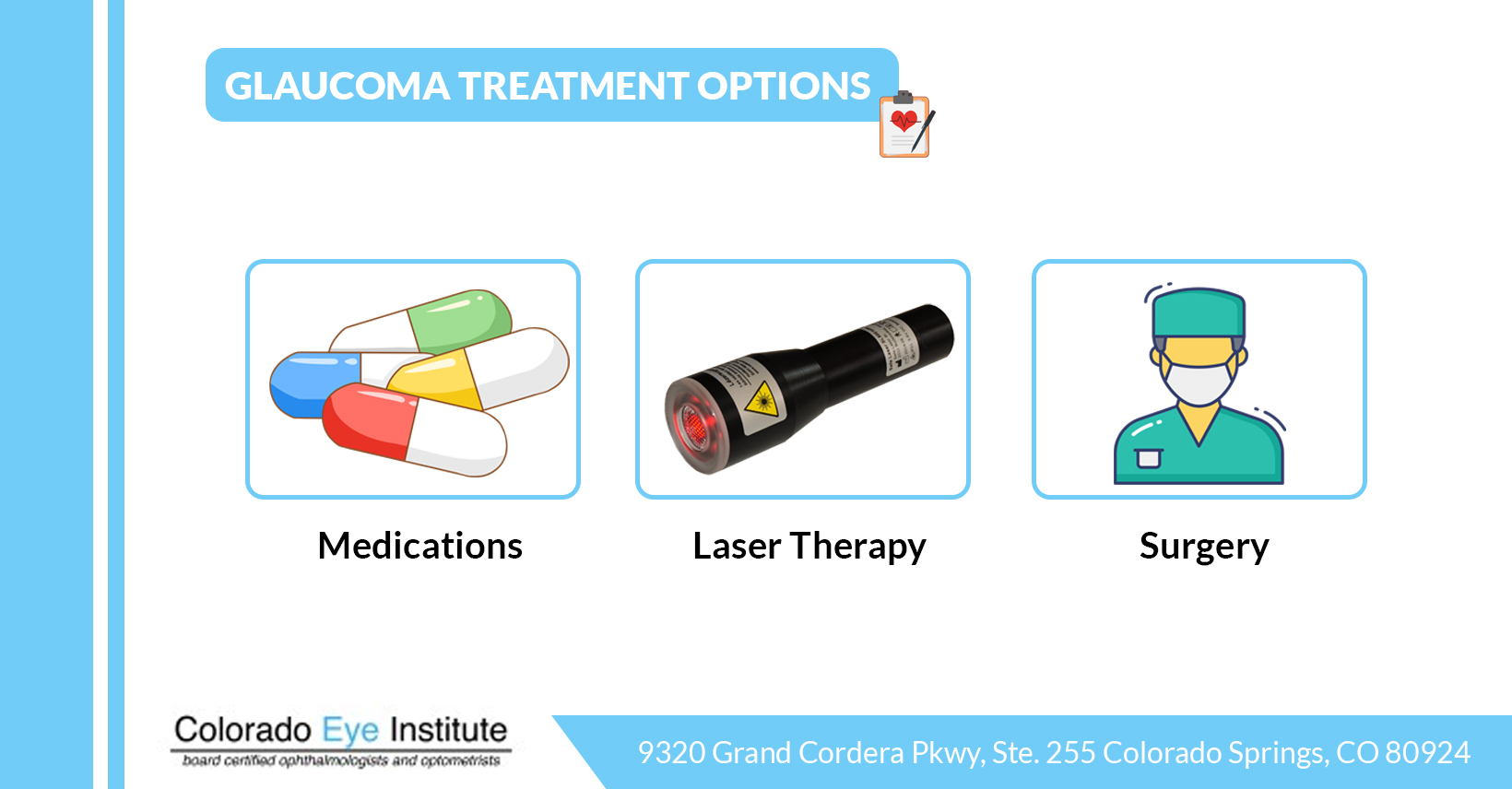Glaucoma prevention is very crucial for preserving long-term eye health and avoiding permanent vision loss. Glaucoma is a group of eye diseases that damage the optic nerve, often due to increased intraocular pressure (IOP). This condition can lead to vision loss and blindness, if not treated. Thus, sometimes it is known as the “silent thief of sight,” if not treated, it can result in blindness.
Regardless of how bad the condition is, early identification and treatment can dramatically lower the chance of severe visual impairment. At Colorado Eye Institute, we are dedicated to delivering excellent treatment to help you maintain your eyesight.
Types of Glaucoma

Primary Open-Angle Glaucoma (POAG)
This is the most common type of glaucoma, characterized by the gradual clogging of the drainage canals, leading to increased eye pressure over time. It develops slowly and often without noticeable symptoms until significant vision loss has occurred.
Angle-Closure Glaucoma
This is a less common but more severe type of glaucoma. It occurs when the iris is pushed or pulled forward, covering the drainage angle of the eye and leading to a sudden increase in intraocular pressure. Symptoms can include severe eye pain, headaches, nausea, and blurred vision, and it requires immediate medical attention.
Normal-Tension Glaucoma
It occurs despite normal eye pressure, maybe due to a sensitive optic nerve or decreased blood flow.
Secondary Glaucoma
It is caused by another medical illness or injury that raises eye pressure.
Congenital Glaucoma
It is an uncommon kind that occurs at birth as a result of faulty eye development.
Furthermore, glaucoma impairs vision by injuring the optic nerve, which is responsible for sending visual information from the eye to the brain. As the optic nerve deteriorates, blind patches appear in the visual field. Without treatment, this can result in full blindness.
Since glaucoma frequently exhibits no symptoms in its early stages, it is known as the “silent thief of sight.” When the illness worsens, symptoms might include:
- Gradual Loss of Peripheral Vision
- Tunnel Vision in Advanced Stages
- Severe Eye Pain
- Blurred Vision
- Halos Around Lights
- Nausea and Vomiting (in Acute Cases)
Managing glaucoma involves reducing intraocular pressure to prevent further optic nerve damage.
Glaucoma Treatment Options

Medications
Eye drops and oral medications are often the first line of treatment to decrease eye pressure. They are prescribed when IOP is above the target level or there is evidence of optic nerve damage.
Laser Therapy
Laser procedures, such as trabeculoplasty for open-angle glaucoma and iridotomy for angle-closure glaucoma, improve fluid drainage. These are recommended when medications are insufficient or cause side effects.
Surgery
Surgical options, including trabeculectomy and drainage implants, create new drainage pathways for the aqueous humor. Surgery is considered when medications and laser treatments do not adequately control IOP.
Preventing glaucoma-related vision loss involves regular eye examinations, especially if you have risk factors such as age, family history, or other medical conditions. Early detection allows for timely treatment to manage intraocular pressure and protect your optic nerve.
Living with glaucoma requires a proactive approach to eye health:
- Follow your treatment plan and use medications as prescribed.
- Set up routine examinations with your optical physician.
- Maintain a healthy lifestyle with proper diet and exercise.
- Avoid smoking and limit caffeine intake.
- Wear protective eyewear to prevent injuries.
Frequently Asked Questions (FAQs) About Glaucoma
1. What Are The Early Warning Signs of Glaucoma?
Early signs are often subtle and may include slight peripheral vision loss or seeing halos around lights. Timely detection requires routine eye checkups.
2. How Often Should I Get My Eyes Checked For Glaucoma?
Adults over 40 should have their eyes checked every 1-2 years, while those with risk factors may need more frequent screenings.
3. What Lifestyle Changes Can Help Manage Glaucoma?
Maintaining a healthy weight, exercising regularly, eating a balanced diet, and avoiding smoking can help manage intraocular pressure.
4. Why Is Glaucoma Called A Silent Thief Of Vision?
Glaucoma often progresses without noticeable symptoms until significant vision loss occurs, making it a “silent” threat to sight.
5. Is Glaucoma Hereditary?
Yes, a family history of glaucoma increases your risk, making regular eye exams essential if glaucoma runs in your family.
6. How Does Glaucoma Impair Eyesight, and What Is It?
Glaucoma is a condition that damages the optic nerve, typically due to high eye pressure, leading to vision loss and potentially blindness.
7. What Is The Life Expectancy of Glaucoma Patients?
Glaucoma itself doesn’t affect life expectancy, but managing the condition is crucial to maintaining quality of life and vision.
Preventing glaucoma is a critical step in maintaining your vision health. Regular eye exams and proactive management are essential for early detection and effective treatment. At Colorado Eye Institute, we are dedicated to providing care to help you navigate life with glaucoma and protect your sight for years to come.
Make an appointment with us right away if you or a loved one is exhibiting any signs of glaucoma or is at risk for the condition. Our expert team at Colorado Eye Institute is here to provide the highest standard of care and support for all your eye health needs.
